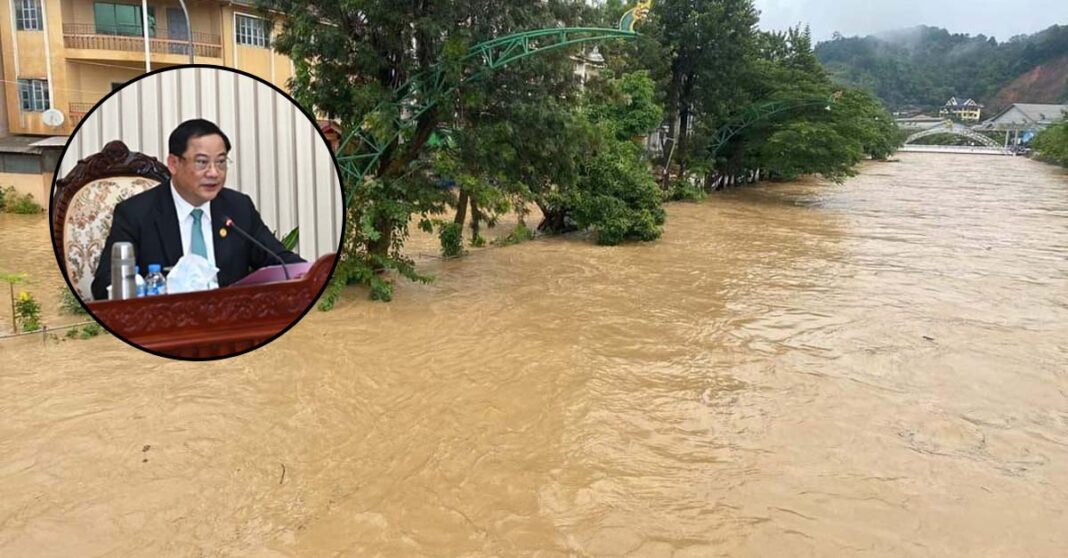The Lao government has outlined plans to tackle national issues during its latest cabinet meeting. Taking place on 20 September, the meeting primarily focused on addressing continuous flooding across the country and economic challenges.
Since early September Laos has experienced heavy flooding, affecting many of its provinces, with Luang Namtha receiving the most damage, Other provinces subjected to the natural disaster include Vientiane Capital, Khammouane, Savannakhet, Houaphan, and Luang Prabang. Having wreaked havoc nationwide for the past couple of weeks, the flooding became part of the meeting’s discussion.
While no specific plans are confirmed, Prime Minister Sonexay Siphandone stated that the government is actively working to address the issue. He assured that authorities will quickly update measures to manage flood impacts throughout the year, restore normalcy, and establish an effective disaster response plan for future emergencies.
On 15 September, both PM Sonexay SIphandone and President Thongloun Sisoulith took their concern to the field when they visited flood-prone areas in Vientiane Capital. During the field-work, Sonexay called for continued efforts in relocating people and essential belongings to safe locations, ensuring the timely provision of food, clean water, and other necessities.
The meeting also discussed Laos’s economic challenges, which have long plagued the country since the Covid-19 pandemic. According to PM Sonexay, the government will closely monitor and inspect mining companies operations across the country to ensure that these firms abide by the environmental protection law.
To do so, they will strictly suppress the import of tax-evading goods, illegal trade in all forms along the borders, and other social issues that can impact on order in the society.
This came after the inflation rate reached 24.3 percent in August, according to the Laos Statistic Bureau. Despite the decrease from the previous month, inflation remains a big challenge, particularly in health care, housing, and food.
Another factor contributing to the economic downturn is the ongoing school dropout crisis and teacher shortage. Acknowledging the issue, the government handed the task to the Ministry of Education and Sports and the Ministry of Finance. Together, they will work to implement the allowance rate for students in the teacher training program, and then present a report at the government meeting next month for further feedback.
According to the Vientiane Education and Sports Department, the large drop-out number, mainly stemming from the country’s economic challenges, are causing many parents to struggle financially, making it difficult for them to afford tuition fees for their children.
In correlation with the student drop-out, the decline in teacher availability also contributed to a drop in overall student enrollment.
Schools in Savannakhet Province, in particular, are suffering from teacher shortage, mainly due to the institutions having very few teachers after the retirement of 300 teachers. The remaining teachers are then forced to teach multiple subjects, compromising the depth and quality of instruction. This, combined with the low-income educators receive, has led to mass teacher retirement.
Amidst the economic turmoil, from the high-inflation rate to the challenges in the education sector, accompanied by the destructive flooding, Laos has been stuck in a tight spot. Nonetheless, both private and public entities have consistently worked to implement countermeasures, hoping the country can overcome its current challenges.



